Alaska offers something incredible year-round; therefore there is no single best time to visit this stunning wilderness state.
Alaska is also full of amazing guided tours that you can’t find anywhere else.
No matter your reason for visiting Alaska – wildlife viewing, spectacular day hikes, skiing or viewing the northern lights – each season provides something different and specific need-to-knows should be kept in mind when choosing when and how long to spend there!
Summer in Alaska
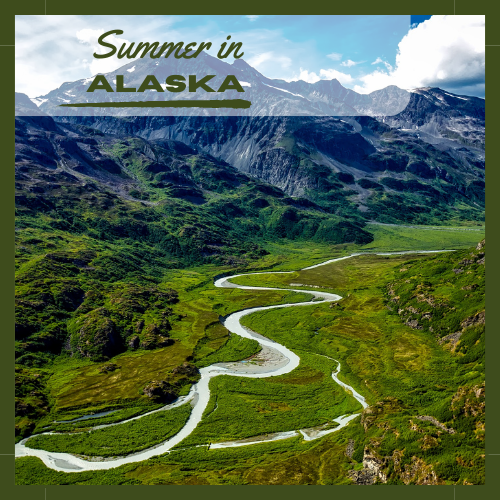
Summer in Alaska offers the ideal conditions for exploring nature. Days are long, wildlife is abundant and temperatures averaged nationally are among the highest! June to September is an ideal time for summer visitors to Alaska, as this period marks peak outdoor activities and parks seasons, when salmon runs begin and wildlife activity peaks.
July is an ideal month to visit Alaska as it is the driest month. Temperatures remain warm enough for hiking while taking in Alaska’s natural scenery without feeling as hot as August.
In May and September, travelers can benefit from reduced airfare, cruise fares, accommodations and car rentals prices as well as tour company discounts with less crowds to deal with.
How bad are the bugs in Alaska in summer?
Alaska, known for its stunning landscapes and abundant wildlife, is also home to some biting bugs that can test the patience of its residents and visitors. Mosquitoes, no-see-ums (biting midges), and black flies are among the most common pests in the region. The severity of these biting bugs varies depending on the season. The warmer months, typically from late spring to early fall, see the highest concentrations of mosquitoes and other biting insects. Late June and early July are notorious for having a surge in mosquito populations, especially in wetland areas. These bugs can be particularly bothersome during this time. However, the mosquito activity usually decreases as the summer progresses, with August and September being comparatively more tolerable. Winter, on the other hand, offers relief from the biting bugs as the freezing temperatures keep them at bay. While Alaska’s biting bugs can be an annoyance during the warmer seasons, the breathtaking beauty and outdoor adventures the state offers make it a worthwhile destination regardless.
Winter in Alaska
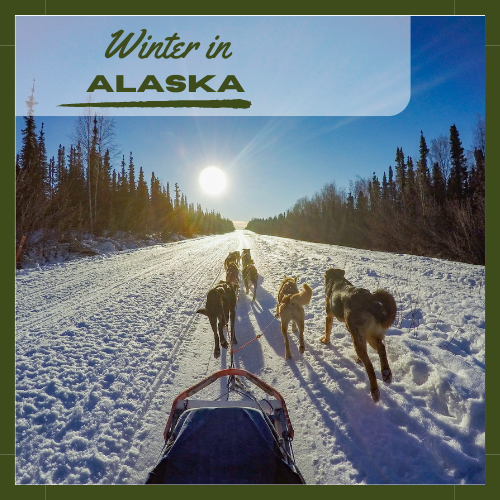
Alaska is an idyllic destination no matter the season, but winter holds special magic for Alaska visitors. White snow envelops the land while Northern Lights dance overhead – not to mention an array of outdoor activities available during this unique time of year.
Winter travel in Alaska allows visitors to truly experience its magic – you’ll find everything from skiing, to sled dog races and snowmobile races, ice carving competitions and holiday festivities.
Winter can also present challenges when it comes to setting expectations and packing requirements – this is particularly relevant if you intend on skiing, or trying to spot the Northern Lights.
If you want to save money, the ideal time and place to visit Alaska are either early summer (May) or shoulder season (mid-September to mid-December). By taking advantage of these off-peak seasons, you may be able to score discounts on hotels and tours while experiencing less crowding and warmer weather.
Spring in Alaska
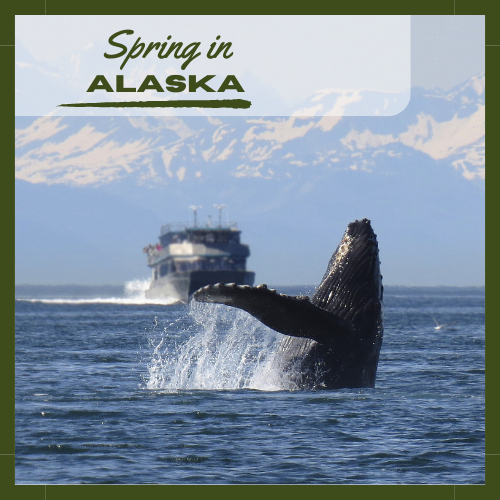
Spring can be an amazing time to visit Alaska for various reasons, particularly wildlife viewing (moose and bear sightings, whale watching).
Spring brings longer days and warmer temperatures – ideal conditions to catch a glimpse of the northern lights! Alaskans consider March and April the Aurora season. These months represent its peak visibility before there isn’t enough darkness left.
If you want the chance at seeing the Northern Lights, plan your trip during this window and travel to Fairbanks – you have the best chances at spotting them there!
May to August are ideal times for other outdoor activities in Alaska, offering long days with more daylight but less rainfall. May through August is also the ideal time for seeing wildflowers bloom and exploring Alaska’s stunning landscapes.
Fall in Alaska
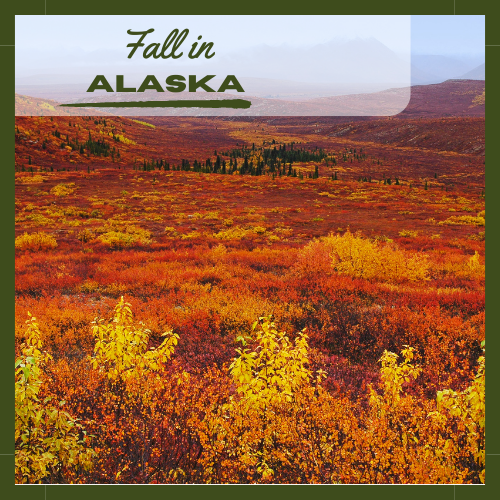
Fall is one of the best times to visit Alaska because it provides such breathtaking changes in scenery. Trees turn yellow while tundra becomes redder still, creating a vibrant quilt-like landscape of colors across its expanse.
This magical time of year is also ideal for travelers hoping to see the northern lights, as nights are sufficiently dark enough that aurora borealis can be seen across much of Washington state. Furthermore, less tourists means reduced costs compared to summer.
Autumn is also an ideal season to take a hike through the interior of a state, exploring fjords, rainforests and uncut temperate forests along the way.
Visitors can also go on wildlife-viewing tours to spot bears and other animals. Whale-watching season runs from April through September; here you may see humpback whales, orcas and other marine life.
Best time to go on an Alaka Cruise?
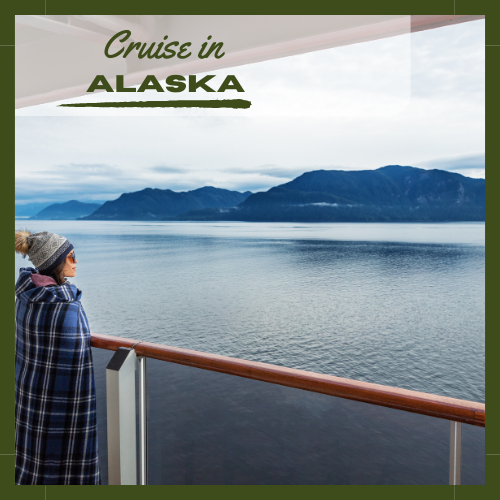
There are generally 2 seasons for Alaska cruises, peak season (June to August) and shoulder season (May and September/October).
The peak season for Alaska cruises is from June to August. During this time, you can expect milder weather, longer daylight hours, and a greater variety of cruise options. It is the ideal time for wildlife viewing, including spotting whales, eagles, and other marine and land animals.
The shoulder seasons of May and September offer slightly lower prices, fewer crowds, and a quieter experience. While the weather may be cooler, you can still enjoy stunning scenery, wildlife sightings, and the advantage of fewer tourists.
If you specifically want to see glaciers, it’s best to plan your cruise for mid-June to August. During this time, the glaciers are more likely to be fully accessible and less obstructed by ice.
If witnessing the Northern Lights is on your bucket list, consider booking a cruise in September when the nights are darker and the chances of seeing this awe-inspiring phenomenon increase.